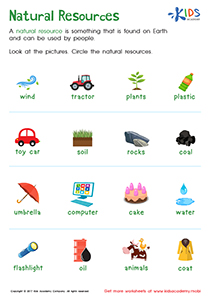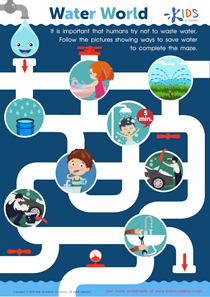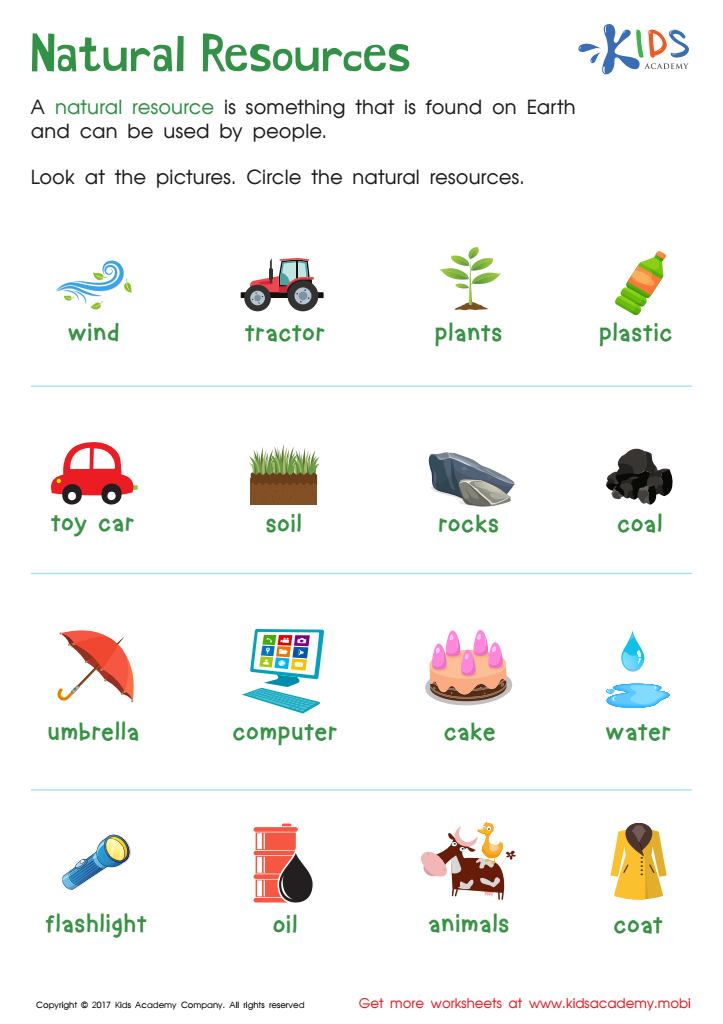Natural Resources - Lesson for Kindergarten, Chapter - Earth and Human Activity
In the "Natural Resources" lesson, designed for kindergartners within the Earth and Human Activity chapter of their Science unit, students will embark on an exciting journey to discover the treasures our planet offers. Through engaging activities like the "Natural Resources Worksheet" and "Water World Worksheet," young learners will explore the various natural resources such as water, soil, air, and minerals that are essential for life on Earth.
Students will learn to identify different natural resources and understand their significance to humans and other living organisms. The lesson emphasizes the importance of these resources in our daily lives, such as how water is necessary for drinking, cleanliness, and sustaining ecosystems. By learning about natural resources at an early age, students will begin to appreciate the environment and understand the concept of sustainability. This foundational knowledge is crucial as it lays the groundwork for responsible environmental stewardship, encouraging them to think about how we can protect and preserve our planet for future generations. Engaging with this lesson will not only enrich students' understanding of the world around them but also inspire them to be mindful of their environmental impact from a young age.


-
Activity 1 / Natural Resources Worksheet
Natural resources are nature’s gift that humans use and depend on in everyday life. Teach your child all about these precious resources using this challenging natural resources worksheet!
Your child will build an appreciation for Earth’s natural gifts after learning to identify them! -
Activity 2 / Water World Worksheet
Water is an essential need for humans. We need water to do a lot of things, and the most important one is to survive. That’s right, our bodies require constant supply of water, and when our bodies lack this water, we fee thirsty. When we don’t quench our thirst, we can get really sick. Luckily for us, our planet is covered in a large mass of water, and we also have natural sources of water. However, it is important that we do not waste water. Use this worksheet to teach your students the ways that we can save water, and complete the maze.






